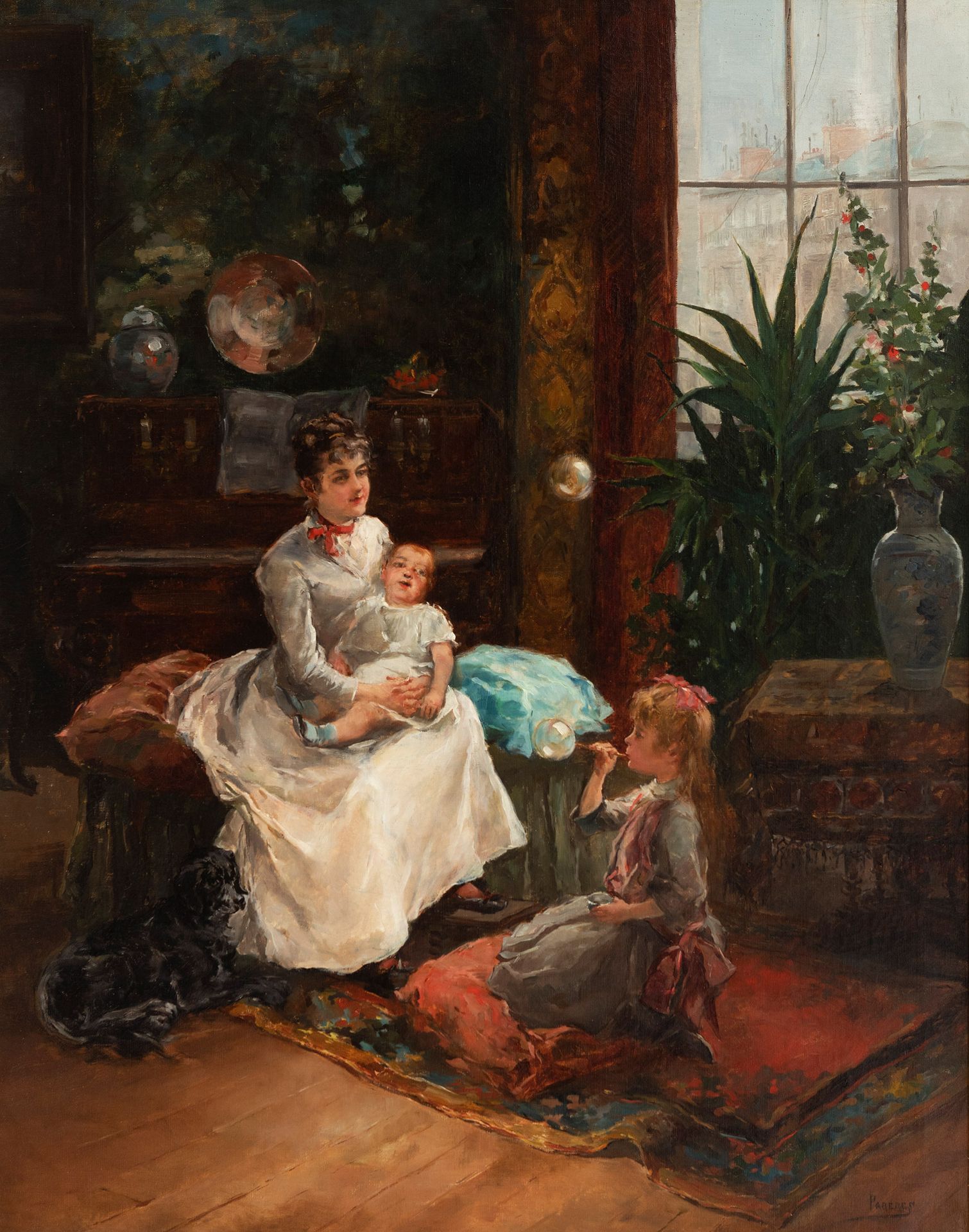Description
VICENTE GARCIA DE PAREDES (Valencia, 1845 - Paris, 1903). "Interior scene". Oil on canvas. Signed in the lower right corner. Size: 92 x 73 cm; 113 x 94 cm (frame). In this interior scene, a symbolic element is added to the realism of the genre painting: the bubbles as an allegory of the passing of time, so used in the baroque vanitas. Vicente García de Paredes excelled in genre painting and his works became enormously popular thanks to the reproductions of them in European illustrated publications. He began his training at the San Carlos School of Fine Arts in his native city and later moved to Madrid to make copies at the Prado Museum, an irrefutable method of learning for so many painters of his time. During these years of apprenticeship he took part in the Valencian Fine Arts Exhibition, winning a bronze medal in 1879. After receiving a pension from the Valencia Provincial Council, he moved to Rome. In the Italian capital he devoted himself to orientalist themes, which were very much in vogue at the time due to the influence of Mariano Fortuny. By 1884 he was in Paris, where he settled permanently. There his painting, while maintaining the previous tone, took on a greater personality and he definitively abandoned Orientalist themes to devote himself to the so-called "coat" paintings. These are mostly scenes of salons furnished in the style of Louis XV, with elegantly dressed eighteenth-century figures. At the same time he worked on genre themes, as in "A Wedding in Valencia", which received an honourable mention at the Paris Salon of 1900, "In the Absence of the Cardinal" and "Young Mother", which he submitted to the Salons of 1888 and 1889, respectively. Typically Parisian are his urban scenes, marked by a palette of pastel tones and a fine brushstroke. Paredes, as he signed himself, avoiding his first surname, was also a master watercolourist, and as such he exhibited regularly at the Circle of Fine Arts and the Paris Society of Watercolourists. The magazine "Le Monde Illustré" published many of his works, including "Un bautizo en España en el siglo XVII", an ingenious anachronism that aroused unusual interest among the public. His work was frequently praised by critics, such as the one that appeared in "La Ilustración Artística" in 1903, which praised Paredes's compositional complexity and creative freedom.
37
VICENTE GARCIA DE PAREDES (Valencia, 1845 - Paris, 1903). "Interior scene". Oil on canvas. Signed in the lower right corner. Size: 92 x 73 cm; 113 x 94 cm (frame). In this interior scene, a symbolic element is added to the realism of the genre painting: the bubbles as an allegory of the passing of time, so used in the baroque vanitas. Vicente García de Paredes excelled in genre painting and his works became enormously popular thanks to the reproductions of them in European illustrated publications. He began his training at the San Carlos School of Fine Arts in his native city and later moved to Madrid to make copies at the Prado Museum, an irrefutable method of learning for so many painters of his time. During these years of apprenticeship he took part in the Valencian Fine Arts Exhibition, winning a bronze medal in 1879. After receiving a pension from the Valencia Provincial Council, he moved to Rome. In the Italian capital he devoted himself to orientalist themes, which were very much in vogue at the time due to the influence of Mariano Fortuny. By 1884 he was in Paris, where he settled permanently. There his painting, while maintaining the previous tone, took on a greater personality and he definitively abandoned Orientalist themes to devote himself to the so-called "coat" paintings. These are mostly scenes of salons furnished in the style of Louis XV, with elegantly dressed eighteenth-century figures. At the same time he worked on genre themes, as in "A Wedding in Valencia", which received an honourable mention at the Paris Salon of 1900, "In the Absence of the Cardinal" and "Young Mother", which he submitted to the Salons of 1888 and 1889, respectively. Typically Parisian are his urban scenes, marked by a palette of pastel tones and a fine brushstroke. Paredes, as he signed himself, avoiding his first surname, was also a master watercolourist, and as such he exhibited regularly at the Circle of Fine Arts and the Paris Society of Watercolourists. The magazine "Le Monde Illustré" published many of his works, including "Un bautizo en España en el siglo XVII", an ingenious anachronism that aroused unusual interest among the public. His work was frequently praised by critics, such as the one that appeared in "La Ilustración Artística" in 1903, which praised Paredes's compositional complexity and creative freedom.
